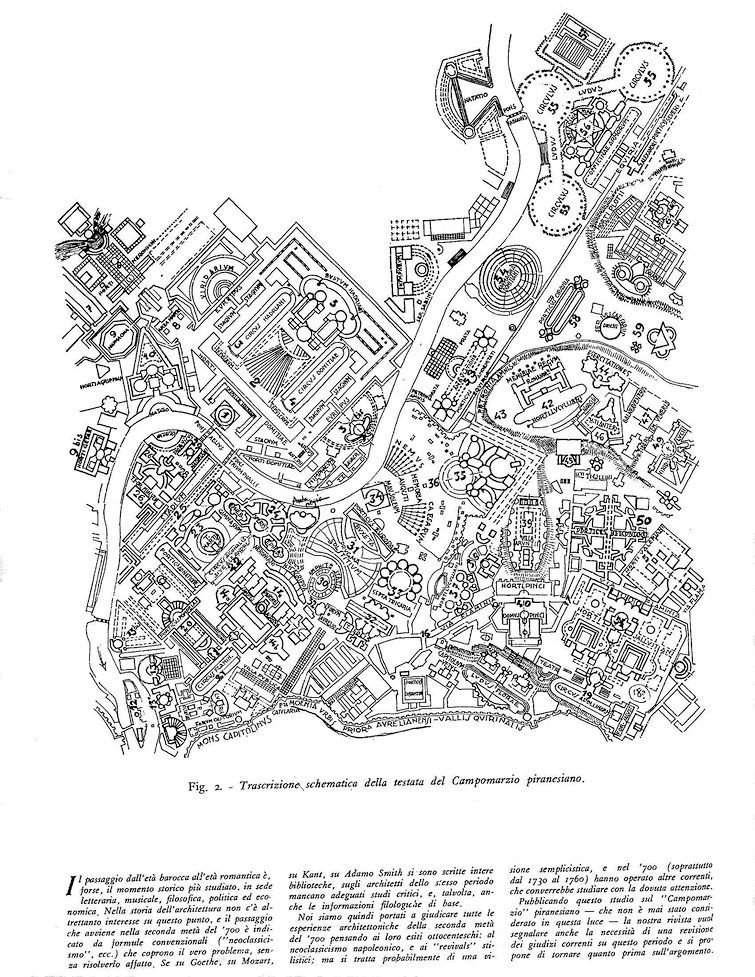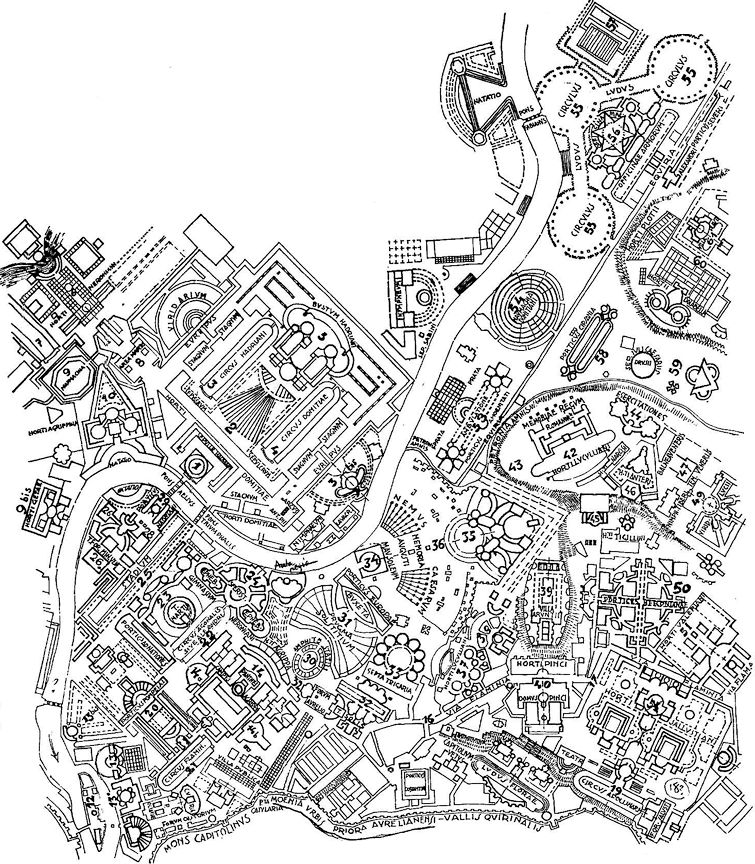
| |

Fig. 2. - Schematic transcription of the Piranesi's plan of the Campo Marzio.
The passage from the Baroque era to the Romantic era is, maybe, the most studied historical moment, in the literary, musical, philosophical, political, and economic fields. In the history of architecture there is no corresponding interest in this point in time, and the passage that occurs in the second half of the eighteenth century is indicated by conventional formulas ("neoclassicism", etc.) which cover up the real problem without at all resolving it. If on Goethe, on Mozart, on Kant, on Adam Smith have been written entire libraries, on the architects of this same period critical studies are lacking, and, in some cases, even philological base information.
We are then compelled to judge all the architectural experiences of the eighteenth century by examining their results in the nineteenth: the Napoleonic neoclassicism, and the stylistic "revivals." But this is a simplistic view, and in the eighteenth century (particularly from 1730 to 1760) other currents were operating which we would do well to study with devoted attention.
By publishing this study on the "Campomarzio" of Piranesi--which has never been considered under this light--our publication wants to also signal the necessity for a revision of current judgments on this period and intends to return as soon as possible to this argument.
|